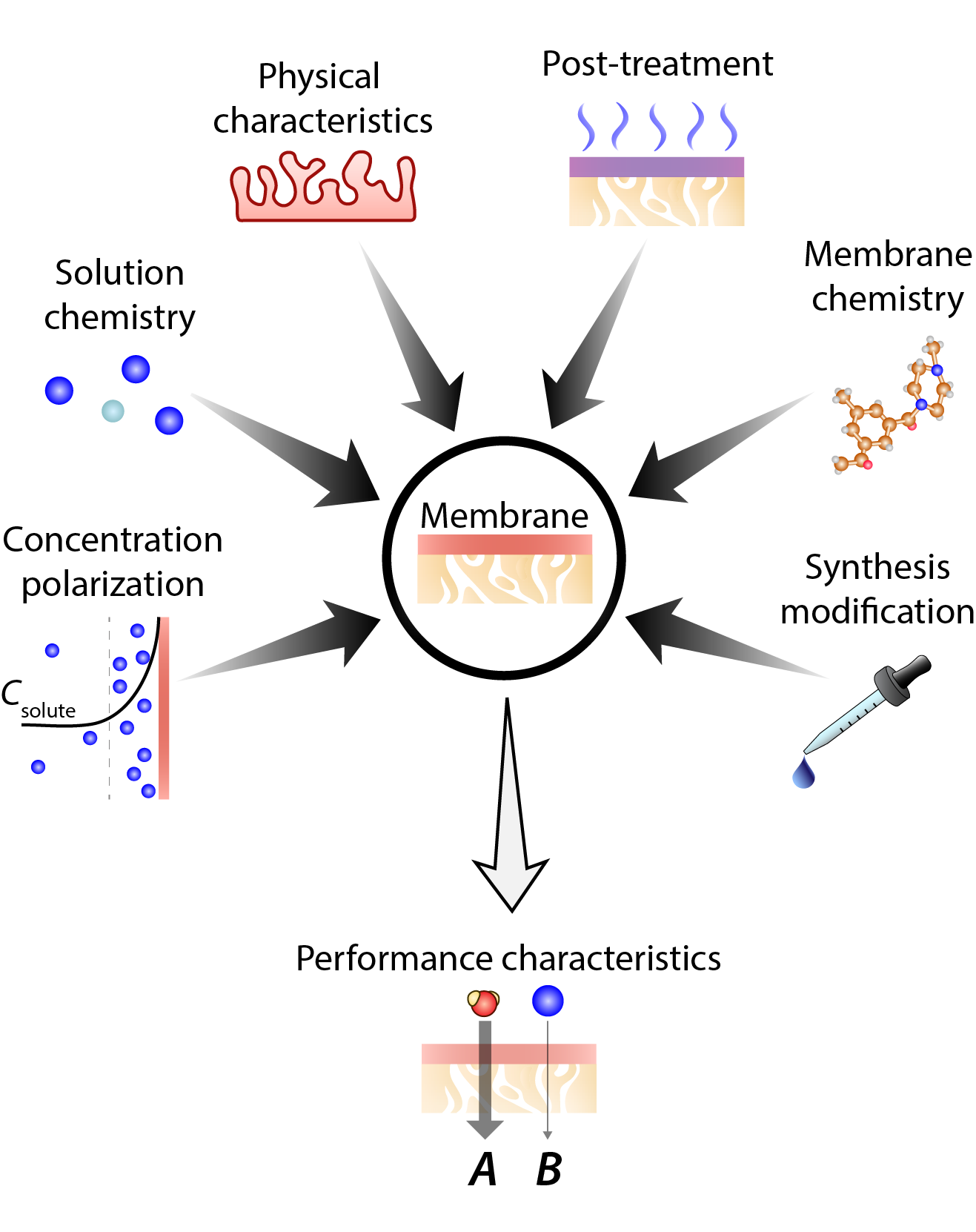Sustainable Separations
membrane-based separations necessary for global water and energy security
Escalating populations, rapid industrialization, and climate change have imposed unprecedented pressures on global resources—with expanding water and energy demands at the heart of these pressures. Limiting post-industrial global warming to 1.5 °C by the end of the 21st century is paramount for sustaining humanity, and meeting this call requires a societal transition to over 70% renewable energy by 2050. Advancing selective separations, particularly those of the aqueous domain, is critical to accelerating the energy transition due to their intensive use in nearly all industrial processes and their role in water security efforts. Various technologies will be needed to meet climate goals, but the versatility and efficiency of membrane-based separations makes them favorable for addressing challenges at the water–energy nexus. The increased complexity of new-age water resources that were once considered waste, but are now necessary targets of valorization (e.g., industrial brine), demands materials that are selective, modular, and resilient.
Designing the next generation of membranes needed for climate resiliency is currently limited by the empirical approaches and conventional materials used to drive innovation. However, recent advances in nanotechnology and materials science offer opportunities to achieve new paradigms in membrane design. During my PhD research, I sought to elucidate synthesis–structure–performance relationships in conventional- and novel-material based membranes, contextualizing how these fundamental relationships can be exploited to improve practical water treatment processes.
Overall, my interests are in transport phenomena unique to extremely confined environments (<10 nm) that are relevant to separation technologies for water and energy applications. Developing these fundamental relationships, which require techniques that radically contrast the traditional Edisonian approach, are critical for the bottom-up design of highly effective separation materials.
Schematic illustration of various membrane properties, treatments, and process conditions that influence membrane performance characteristics, such as water and salt permeance (A and B, respectively). Image taken from C.L. Ritt et al., J. Membr. Sci. (2022).
